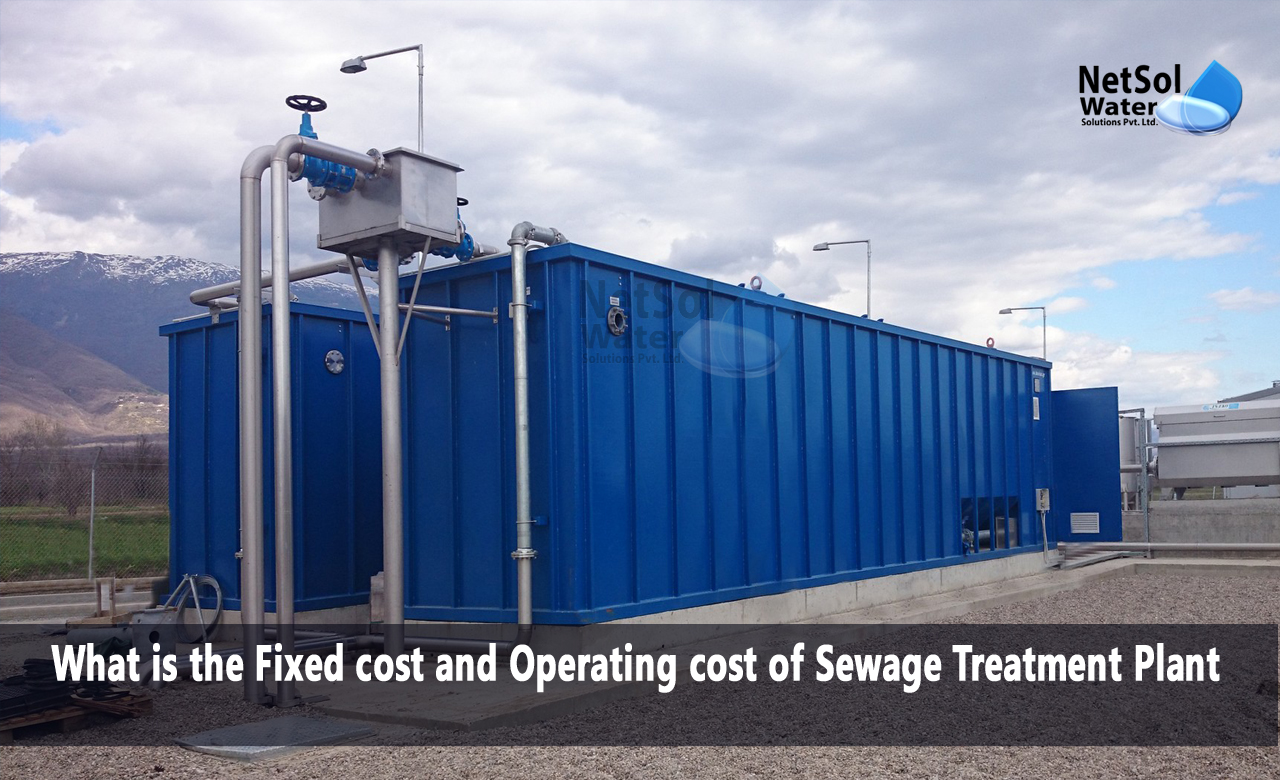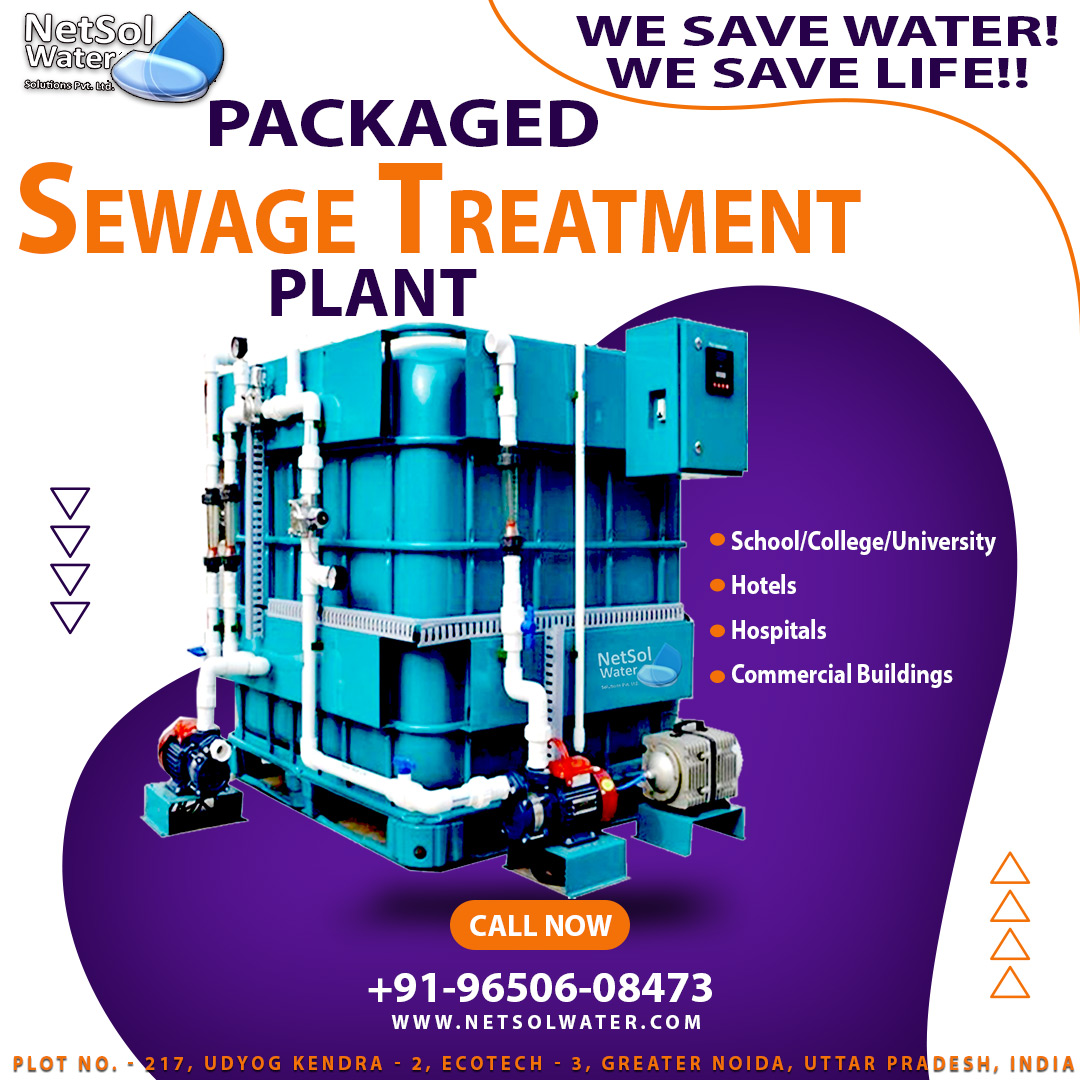What is the Fixed cost and what is the Operating cost of STP Plant?
Wastewater must be treated and purified at sewage treatment plants (STPs) before it can be safely released into the environment. It's critical to make a distinction between fixed costs and operational costs in order to manage and optimise the finances of a sewage treatment facility. In this blog, we will go into the definitions of fixed costs and running costs as they apply to STPs, as well as the elements that make up each category.
Fixed Costs in Sewage Treatment Plants:
Fixed expenses, sometimes referred to as capital costs, are the upfront expenditures made to build, install, and commission a sewage treatment facility. These expenses are up front and often stay the same throughout the plant's operational life. When assessing the project's overall financial viability, fixed costs are an important factor.
The main elements of fixed costs in sewage treatment plants are as follows:
· Costs of design and engineering
These expenditures include the price of developing the sewage treatment plant's architectural and engineering designs as well as feasibility studies. Costs associated with design and engineering are essential to guaranteeing the plant's functionality, regulatory compliance, and long-term effectiveness.
· Costs of construction
Among the largest fixed costs while constructing a STP are the construction costs. They cover costs for site preparation, excavation, building steel and concrete structures, pipes, and electrical systems. Costs associated with construction also include the labour, equipment, and supplies needed to start the plant.
· Purchasing land and obtaining permits
Significant fixed expenditures include purchasing property for the sewage treatment facility and receiving the required permits and approvals from regulatory bodies. Important factors in this regard include the plant's location and compliance with environmental laws.
· Technology and equipment
The cost of buying and installing treatment technologies and equipment, including as pumps, clarifiers, aeration systems, and chemical dosing systems, is included in the fixed expenses. Modern, energy-efficient equipment purchases can have an impact on these expenditures' size.
· Work and Education
The fixed expenditures include expenses for recruiting and training new employees, especially during the construction phase. Training makes sure that the personnel has the necessary skills to maintain and run the facility effectively.
· Commissioning and testing
Sewage treatment facilities go through extensive testing and commissioning procedures before going into full operation. The expenditures related to performance evaluation, system calibration, and modifications to guarantee the plant runs as efficiently as possible are included in fixed costs.
· Legal and consulting fees
The fixed expenses are increased by hiring consultants and legal specialists for legal matters, environmental studies, and regulatory compliance. These experts are essential in obtaining permits and making sure that local and federal laws are followed.
· Insurance and contingency
It is customary to set aside a portion of the project budget for contingencies to pay for unanticipated costs that arise during construction. The category of fixed expenditures also includes the cost of insurance, such as liability and property insurance.
· During Construction (IDC) Interest
The interest accumulated during the building period is regarded as a fixed cost if the project is financed by loans or borrowed cash. To calculate the actual capital investment needed for the project, IDC must be taken into consideration.
Operating Costs in Sewage Treatment Plants:
Once a sewage treatment plant is put into service, continuing costs are incurred to run and maintain it. These costs are also referred to as operating expenses. These expenses are ongoing and subject to alter depending on various elements like plant capacity, governmental regulations, and the effectiveness of plant operations.
The following are the main factors that affect sewage treatment plant operating costs:
1.Employers and Employees:
The salaries and benefits of the operators, technicians, engineers, and support employees who oversee daily plant operations are included in the personnel costs. Depending on the size and complexity of the facility, several staffing levels may be used.
2.Consumption of energy:
In STPs, energy expenditures make up a sizable amount of operating costs. Pumps, blowers, mixers, and other pieces of machinery need to be powered by electricity in sewage treatment plants. Operating costs can be greatly lowered by using energy-efficient tools and procedures.
3.Reagents and Chemicals:
Chemicals are necessary for many treatment procedures carried out in the plant, including pH balancing, pH correction, coagulation, and flocculation. Chemical prices can change depending on the water's quality, legal requirements, and the chosen treatment techniques.
4.Upkeep and Repairs:
To guarantee the plant's dependable and effective functioning, routine maintenance is essential. Regular upkeep, equipment repairs, and the replacement of worn-out parts and components are all included in maintenance expenditures.
5.Management of sludge:
Sludge management include gathering, dewatering, and either disposing of leftover sludge produced during the wastewater treatment process or treating it further. Transportation, dewatering tools, and disposal fees are possible expenses.
6.Testing and monitoring:
STPs must regularly test the quality of their water and conduct continuous monitoring in order tomaintain regulatory compliance. This covers the price of the laboratory staff, supplies, and analytical equipment.
7.Overhead and Administrative Costs:
Costs associated with office space, utilities, insurance, and other overhead expenses required for plant administration are included in administrative costs. These expenses might also cover reporting and compliance with regulatory requirements.
8.Learning and Development of Skills:
Programmes for ongoing skill development and training for plant workers and operators help to ensure efficient operations and are included in operating costs.
9.Emergency Preparedness and Response:
Emergency preparedness and response should be covered by a share of operating expenses. Redundant equipment, spill response strategies, and catastrophe recovery plans are a few examples of this.
10.Regulatory Conformity:
Operating expenses include the costs related to maintaining compliance with environmental laws, such as permit renewals and adjustments.
Conclusion:
for sewage treatment facilities to efficiently manage their finances, it is essential to grasp the difference between fixed costs and operating costs. Operating costs are the ongoing expenditures spent during regular operations, whereas fixed costs are the initial investments necessary for the plant's development and commissioning. Operators of STPs can guarantee the long-term viability of wastewater treatment facilities while adhering to environmental regulations and offering a crucial service to communities by carefully managing both types of expenses.




